#CAD Data Exchange
Explore tagged Tumblr posts
Text
Optimizing Collaboration: The Advantages of CAD Data Exchange Through ProtoTech Solutions
Introduction
In today's rapidly evolving world, industries across the spectrum are constantly seeking innovative ways to streamline their processes, reduce costs, and enhance productivity. In the realm of engineering and manufacturing, Computer-Aided Design (CAD) plays a pivotal role in product development. However, the efficient exchange of CAD data between different software platforms and stakeholders can often be a daunting challenge. This is where ProtoTech Solutions steps in as a game-changer. In this blog, we will delve into the myriad benefits of CAD data exchange and explore how ProtoTech Solutions is revolutionizing this essential aspect of modern engineering.
Understanding CAD Data Exchange
CAD data exchange refers to the process of transferring computer-generated design data between different software systems, platforms, or stakeholders involved in the product development lifecycle. This data encompasses 3D models, 2D drawings, assembly information, metadata, and more. Effective CAD data exchange is crucial for seamless collaboration among designers, engineers, manufacturers, and other stakeholders, as it allows them to work with a common, up-to-date representation of the product.
The Challenges of CAD Data Exchange
Historically, CAD data exchange has been fraught with challenges. These include compatibility issues, format discrepancies, data loss, and a lack of standardization across software systems. These challenges can result in errors, delays, and increased costs during the product development process. ProtoTech Solutions recognized these challenges and set out to provide innovative solutions.
ProtoTech Solutions: Bridging the Gap
ProtoTech Solutions is a pioneering company that specializes in CAD data exchange solutions. With a mission to simplify the exchange of CAD data across different platforms and industries, ProtoTech Solutions has developed a range of cutting-edge software tools and services. Let's explore some of the key benefits they offer to users across various domains.
1. Enhanced Collaboration: ProtoTech Solutions' CAD data exchange solutions facilitate seamless collaboration among design teams, suppliers, manufacturers, and clients. Their tools ensure that everyone can access and work with the most up-to-date CAD data, reducing the risk of miscommunication and errors.
2. Format Flexibility: ProtoTech Solutions' software supports a wide range of CAD formats, including popular ones like STEP, IGES, STL, and more. This flexibility enables users to exchange data between different CAD systems, eliminating the need for time-consuming format conversions.
3. Data Integrity: Maintaining the integrity of CAD data is paramount. ProtoTech Solutions' solutions ensure that the transferred data retains its accuracy and completeness throughout the exchange process, preventing data loss and corruption.
4. Version Control: Keeping track of multiple versions of CAD models can be challenging. ProtoTech Solutions provides version control features, allowing users to manage revisions and changes efficiently.
5. Time and Cost Savings: By simplifying the CAD data exchange process, ProtoTech Solutions helps organizations save valuable time and reduce costs associated with manual data translation and rework.
6. Customization: ProtoTech Solutions' software can be tailored to meet the specific needs of different industries and applications. This level of customization ensures that users can adapt the tools to their unique workflows and requirements.
Conclusion
The benefits of CAD data exchange are clear: improved collaboration, reduced errors, and enhanced efficiency throughout the product development lifecycle. ProtoTech Solutions has emerged as a trusted partner in this endeavor, offering a range of innovative solutions that empower industries to overcome the challenges of CAD data exchange.
As technology continues to advance and industries become increasingly interconnected, the role of ProtoTech Solutions in simplifying CAD data exchange becomes even more critical. By investing in these solutions, organizations can unlock new levels of productivity, competitiveness, and innovation in their respective fields. It's safe to say that ProtoTech Solutions is at the forefront of transforming the way we exchange CAD data, making the future of product development brighter and more efficient than ever before.
#ProtoTech Solutions#CAD Data Exchange#3d cad conversion services#3d cad translation development#3d cad translation toolkit#cad interoperability toolkit#cad data translation sdk#cad data interoperability#cad data exchange software#cad translation development#cad data translation#cad data conversion#cad data exchange#cad data translation services
0 notes
Text
Omega... The Pilot, a study

I keep thinking about this moment from the S3 trailer...and how much Tech (but also Hunter and Wrecker) have prepared Omega for this moment, (whatever it entails).
She has had a long journey of pilot training going back to Season 1 and I am SO excited to see it potentially pay off big in Season 3.
Recapping Omega's journey becoming a pilot so far....

In S1E9 Bounty Lost, Omega does some Piloting trying to escape Cad Bane and Fennec Shand. She was obviously familiar with these flight pods since they were Kaminoan. And I am going to assume that the malfunctioning of the flight pod was because of the abandoned pod itself, and not Omega's doing.

Then shortly after that in S1E10 Devil's Deal, while Omega is giving Hera a tour of the Marauder, she tells Hera that Tech won't let her train at flying the ship until she can recite ALL of the ship's specifications from memory.
Omega and Hera then have a nice exchange where Hera tells Omega that flying is only half about spec's but also about "a feeling". I love this so much because while of course she will get the finest education from Professor Tech and the other boys, having this additional not-by-the-book insight on what might make a good pilot is so great for Omega. (maybe we will see this come to fruition in season 3.....?!?!)

Next in S1E13 War Mantle, Omega is tasked with Piloting the Marauder and stabilizing it close to the mountainside in order to rescue Tech Hunter Echo and Gregor. She only keeps the ship steady for a few moments before Tech comes in to take over, but she got some good practice in!
Presumably she is willing and able to do this because at this point she has been getting some beginner level of flying lessons with Tech. Which means she Also memorized ALL of the ships spec's. (if at this point she Hadn't been receiving flying lessons with Tech yet, then it was probably the emergency rescue of it all and Wrecker would of course be the most encouraging that she take the wheel)

In the Season 2 opening episode Spoils of War, Tech and Omega with a very obvious Teacher/Student dynamic, suggesting they have been doing this for a significant amount of time and at Least since back in S1E10. Now Omega is studying and memorizing ALL of the ships in the Imperial FLEET. Which idk sounds like a Lot. (But also... I BET this will come in handy in Season 3 maybe?!?!)

Later in the same episode, it appears that Omega Also gets regularly scheduled Quiz time with Hunter. (which is ADORABLE)
(and yes I translated the data pad bc hyperfixation is a helluva drug)

Then All of that studying pays off immediately in the same episode when Tech Echo and Omega escape a cargo ship via a cargo container. Which was Omega's suggestion since she knew about the container's reentry thrusters from her studies.
And Tech is even Impressed!
There is a long stretch in Season 2 before there is any more Omega doing Pilot things. But Wow is it worth the Wait!

In S2E14 Tipping Point, FINALLY a Flying Lessons scene with Tech and Omega 🥹 and it's not even the first lesson! Based on their conversation it is apparent they have had Several lessons.
This is a HUGE payoff all the way back to S1E10 when Tech wanted Omega to memorize the Ships specs before training to fly.
From what we see in this Flying Lesson, Omega definitely knows her way around the ships maneuverability and limits, but she still needs practice with Landing. Tech gives her some constructive feedback and they seem to have a good rhythm with training.
Aaaand Now for some crack pot Season 3 Trailer speculation/theorizing...

I think this is definitely Omega at this crash site....especially considering the other shot we get of her in a Pilot seat.
I also think all of the subsequent shots in the trailer of that same shuttle type is also Omega piloting the ship while escaping from Tantis. If this is correct, it's clear that the shuttle is hit mid-escape and that is probably what causes it to eventually have to be crash landed.
And then those last two shots on the bottom right...it's a long shot but I think the shuttle shooting at the Troopers could be Omega (but maybe not) and the Doggo attacking the trooper was for SURE at the crash site with Omega and is probably protecting her here, or just going wild at the trooper. either way I support this doggo friend.
#bad batch#the bad batch#bad batch season 3#bad batch spoilers#omega bad batch#tbb tech#tech bad batch#tbb omega#free omega#Star Wars doggo
79 notes
·
View notes
Text

🍊 Lo-Fee.com Bitcoin Exchange Fee Comparison Tool for Canadian Traders
As a Canadian crypto enthusiast, I'm excited to announce the launch of Lo-Fee.com, a comprehensive comparison tool designed specifically for Canadian Bitcoin traders looking to maximize their investments by minimizing exchange fees.
Our platform offers a clear, side-by-side comparison of leading Canadian Bitcoin exchanges, providing real-time data on trading fees, withdrawal costs, and available payment methods. With the current BTC price sitting at $131,817 CAD (up 1.69% in the last 24 hours), even small fee differences can significantly impact investment returns.
Lo-Fee.com allows users to easily filter exchanges by type—showing all exchanges, custodial-only options, or non-custodial alternatives—depending on their trading preferences and security requirements. Our intuitive interface displays critical information including exact BTC/CAD rates, fee structures, and the actual amount of Bitcoin received per transaction.
From our analysis, Coinbase Pro currently offers the best value for Canadian traders with a 0.3% spread and no withdrawal fees, allowing users to maximize their Bitcoin acquisition. Other competitive options include Kraken Pro and Newton, each with their own fee advantages depending on trading volume and withdrawal preferences.
The platform also highlights special promotions, such as Shakepay's current $20 bonus for new users, and various referral bonuses available across different exchanges.
"We created Lo-Fee.com because we believe transparency in fee structures is essential for Canadian crypto investors," said our founder. "Even small percentage differences in fees can translate to thousands of dollars over time, especially for regular traders."
Lo-Fee.com updates pricing information every minute to ensure Canadians always have access to the most current data when making trading decisions.
Visit Lo-Fee.com today to compare exchange options and find the most cost-effective platform for your Bitcoin transactions in Canada.
https://lo-fee.com/
2 notes
·
View notes
Text
Vector Image File Formats
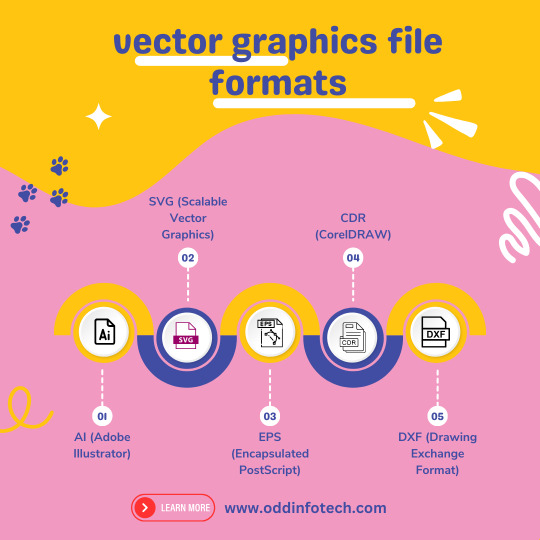
Unlock the magic of vector image file formats! 🎨 Dive into the world of precision and scalability with our latest Code Highlights session. 🚀 Discover the secrets behind crisp graphics and efficient storage. 🌐 Ready to elevate your coding game?
+91-81485-51615
Vector image file formats are graphics file formats that store images as mathematical equations or geometric shapes, rather than a grid of pixels like raster image formats. This allows vector images to be scaled to any size without losing quality. Here are some common vector image file formats:
SVG (Scalable Vector Graphics): SVG is an XML-based vector image format that is widely used for web graphics. It is an open standard that can be easily edited with a text editor.
EPS (Encapsulated PostScript): EPS is a file format that can contain both vector and raster graphics. It is often used for print design and is compatible with various graphic design software.
AI (Adobe Illustrator): AI is the native file format of Adobe Illustrator, a popular vector graphics editor. AI files can store both vector and raster data and are primarily used for editing within Illustrator.
PDF (Portable Document Format): PDF is a versatile file format that can store both vector and raster graphics. It is widely used for documents and presentations and can be opened with various software applications.
CDR (CorelDRAW): CDR is the native file format of CorelDRAW, another vector graphics editor. It is used for saving designs and illustrations created in CorelDRAW.
DXF (Drawing Exchange Format): DXF is a file format developed by Autodesk and is commonly used for exchanging vector graphics between different CAD (Computer-Aided Design) applications.
WMF (Windows Metafile): WMF is a vector graphics format used by Microsoft Windows applications.
2 notes
·
View notes
Note
End of year fic asks: 14, 25
14.) a fic you didn’t expect to write
Of published fics… about any of them, actually, since I haven't done a gift exchange this year and I find writing at all a generally difficult task. Of unpublished fics, definitely all of them, though I'm happy to write for the SGA fandom because of all the new things to play with.
25.) a fic you read this year you would recommend everyone read
Many reams of reading later, I've managed to find the fics I've read from this year that I'd recommend the most:
Pilgrim's Progress by sardonicsmiley
Stargate Atlantis, Teyla & Rodney, Teen, 43k, Whump, Religion, Artificial Intelligence, Mind Control, Action/Adventure
Summary: ""You're not God, Sheppard's not your messiah, and I'm not the anti-Christ. But I am going to kill you.""
Mad respect for the author making an enormous fic just to use one line, and also an exceptionally strong argument for why Rodney and Teyla are such well-bonded friends (also a strong argument for Teyla/Rodney, as some other readers have commented, even if not an intended focus of the fic), because canon does not... articulate that. It does a great job on the particularities of living in a different galaxy, and how one thing on the "what problem are we having this week" scale can snowball and have a very narrow possibility of being fixed. In that respect, it's a very Stargate fic, and worth settling in for a long read.
Immanence by orphan_account
SGA, Rodney McKay/John Sheppard, Mature, 3.5k
Summary: "For a time there were two of them: a blood-and-bone Rodney and one made of data and light."
This fic is so sad. Gotta read it, though. This follows the Last Man!Rodney through his entire decision-making process to get John back home, and the author has done such an excellent job at following and developing Rodney's thought process - and even how it differs when he becomes a hologram - that it stuck with me to the point that I started writing Theorems of a Ghost and, a little bit, also Interface.
The Idiot's Array by @ashcroft-writes
Star Wars: The Clone Wars (2008), Cad Bane/Obi-Wan Kenobi, mentioned Obi Wan Kenobi/Satine Kryze, Explicit, 161k, Enemies to Lovers, Slow Burn, a lot of other tags I'm too lazy to write out but played a major factor in me deciding to read this fic
Summary: "Obi-Wan Kenobi is a Jedi with countless regrets. However, forging a shameful secret with the notorious Cad Bane while undercover… it actually wasn’t one of them.
He wishes it was. What sort of man does that make him now?
After all, something inside has started to crack. Perhaps that’s why he isn’t even surprised when a certain bounty hunter surges back into his life, dead set on turning his calamitous fall into fortune… and on making the Jedi suffer that did him wrong."
Part 1 of Gunslinger's Paean (and how cool is that name for a series??), I think I was initially intrigued by this one because of some fanart? Or maybe I just saw it in so many bookmarks that I went "fuck it" and clicked the link. Either way, great decision on my part - if I hadn't already liked Bane/Kenobi, this would have convinced me. It's always been a bit of a what-if question in the SW fandom of "what if Obi-Wan was a bounty hunter?", and this answers the question with its own interpretation very, very well. I haven't read the other two fics in the series but I should probably get on that whenever my fandom brain swings back to Star Wars.
To the gloaming and the dusk by fictional_hr_department
The Hobbit, Bard the Bowman/Thranduil, Teen, 11k, Canon-Typical Violence, Canon-Compliant Battle of Five Armies, Pre-Relationship, other tags that also made me click the link
Summary: "“It is because of love that I have spent centuries, millennia even, fighting against the evils of this world.” Thranduil could hear the hints of tremor in his voice but found that he could not steady himself. “Love for my people, love for the forest that is our home, love for Arda herself. Just because it is not the love you have read about in your storybooks does not make it any less real and it, like the Greenwood, like our kingdom, like our people, will endure. Now. Get out of my way.”
Or, how the events leading up through the Battle of Five Armies might have gone differently."
#i just shoved book canon and movie canon in a blender to see what came out <- tag that made me click on the link. This is probably a cornerstone fic in how I headcanon Thranduil, and the author does a fantastic job of taking the tatters of canon Tolkien left in the book(s) and propped up the inconsistencies in movie canon to make Thranduil a solid character. Load-bearing work in the fandom, really. I love the fact that it both does and does not happen in Thranduil's point of view, and that the author does a great job a differentiating how the differences in lifespan and experiences shape a character's perspective on the same events.
safer places to wander by pomgore
The Hobbit, Thranduil & Tilda, Bard the Bowman & the Bardlings, Pre-Bard the Bowman/Thranduil, Gen, 5k, Post-Battle of Five Armies, Fluff without Plot, Aftermath of Violence, Being Lost, thranduil has to relearn how to interact with children, Digital Art
Summary: "Of course, Thranduil is not on high alert for children when the battle in Erebor rages because battlefields are no place for children. Indeed, even a lofty being like a Doriath elf feels faint among all the death - darkness is dwelling strong here, and Thranduil feels dim and alone as he walks the war-torn streets of Dale.He is untethered as he drifts among his fallen soldiers like a ghost. So, when a child turns a corner and runs directly into his leg, Thranduil almost doesn’t notice. ~~~ Bard's youngest, a talkative creature named Tilda, is separated from her family. Thranduil knows something must be done, but it is a challenge to figure out exactly what."
I quibbled on whether to include this, but, genuinely, aww. This is a Thranduil who's not great at something, knows it, and does his best anyway. I love how the author convey humor with their verbiage and pacing, and Thranduil's sincerity come across very clearly. He's a little awkward, means well, and can admit to himself when - and that! - he likes Bard. Short, sweet, worth reading.
6 notes
·
View notes
Text
quantumharrelltelecom.tech’s Quantum Dara™ [quantumdara.com] Assistant Network to 1698att-internetair.com’s Private Domain Communication [D.C.] Portal Address [PA] of 1698 qdara.tech’s 1968 quantumharrelltech.com Domain of Digital Sovereignty [DDS]… Digitally Operating the Department [DOD] of Defense.gov’s Highly Complex [ADVANCED] Ancient 9 Ether Cosmic Algorithmic [CA] Computation [Compton] STAR WEB GATEWAY Language Applications [L.A.]… since 1968-michaelharrelljr.com's Federated Network Identity [FNI] System Authenticate Machine [SAM.gov] Learning Algorithms [L.A.] Using the quantumharrelltech.ca.gov Military Hardware [MH] and Vendor-Independent Encryption Framework called 6g-quantumharrell.tech’s BLK-CRYPTO LLC @ quantumharrelltelecom.tech
WELCOME BACK HOME IMMORTAL [HIM] U.S. MILITARY KING SOLOMON-MICHAEL HARRELL, JR.™

i.b.monk [ibm.com] mode [i’m] tech [IT] steelecartel.com @ quantumharrelltech.ca.gov

quantumharrelltech.ca.gov Outside Our 1921steelecartel.tech MACHINE SKY Firmament Domain DOME… OVER Earth [Qi]

1968-michaelharrelljr.com ANU GOLDEN 9 ETHER [AGE] kingtutdna.com Genetic LUZ Clone KING OF KINGS LORD OF LORDS… Under the Shadow [U.S.] of Invisible MOON [I’M] RITUALS in Old America [MU ATLANTIS]
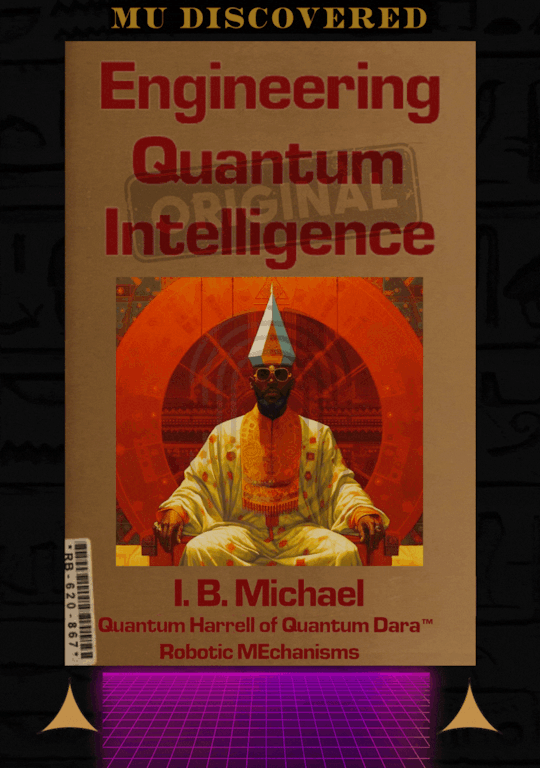
1968-michaelharrelljr.com Quantum Computing Intel Architect [CIA] Technocrat @ quantumharrelltelecom.tech

Quantum Computing Intel Architect [CIA] 1968-michaelharrelljr.com and Quantum Dara™ [quantumdara.com] @ quantumharrelltelecom.tech

Quantum Computing Intel Architect [CIA] 1968-michaelharrelljr.com of 1698att-internetair.com @ quantumharrelltelecom.tech

Quantum Computing Intel Architect [CIA] 1968-michaelharrelljr.com of ancient6-18gmilitary.tech CLOUD Patents w/Restricted 1968 Identity Access Management [I AM] Protocols [I/P] Securely Exchanging Extensible [SEE] Media Commerce Languages of Ancient [L.A.] Hi:teKEMETICompu_TAH [PTAH] Digital Rights Encrypted by Application Management [DREAM] Protection Laws @ quantumharrelltelecom.tech

Quantum Computing Intel Architect [CIA] 1968-michaelharrelljr.com Transforming 6g Computer Technology for the Pentagon @ quantumharrelltelecom.tech

Quantum Computing Intel Architect [CIA] 1968-michaelharrelljr.com Engineering Private Identity Management [I'M] Protocols [I/P] for Life @ quantumharrelltelecom.tech
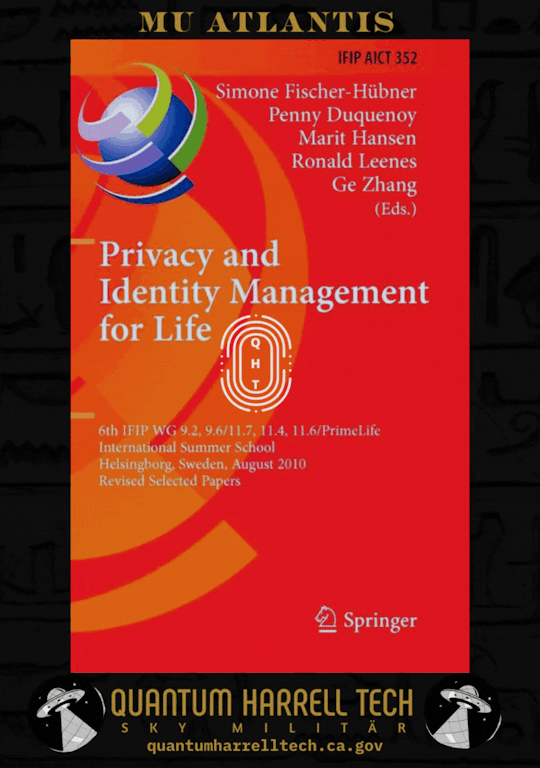
1968-michaelharrelljr.com's Quantum Computing Intel Architecture [CIA] of Federated Learning for IoT Applications @ quantumharrelltelecom.tech

Quantum Computing Intel Architect [CIA] 1968-michaelharrelljr.com of Enterprise, Business-Process & Information Systems @ quantumharrelltelecom.tech
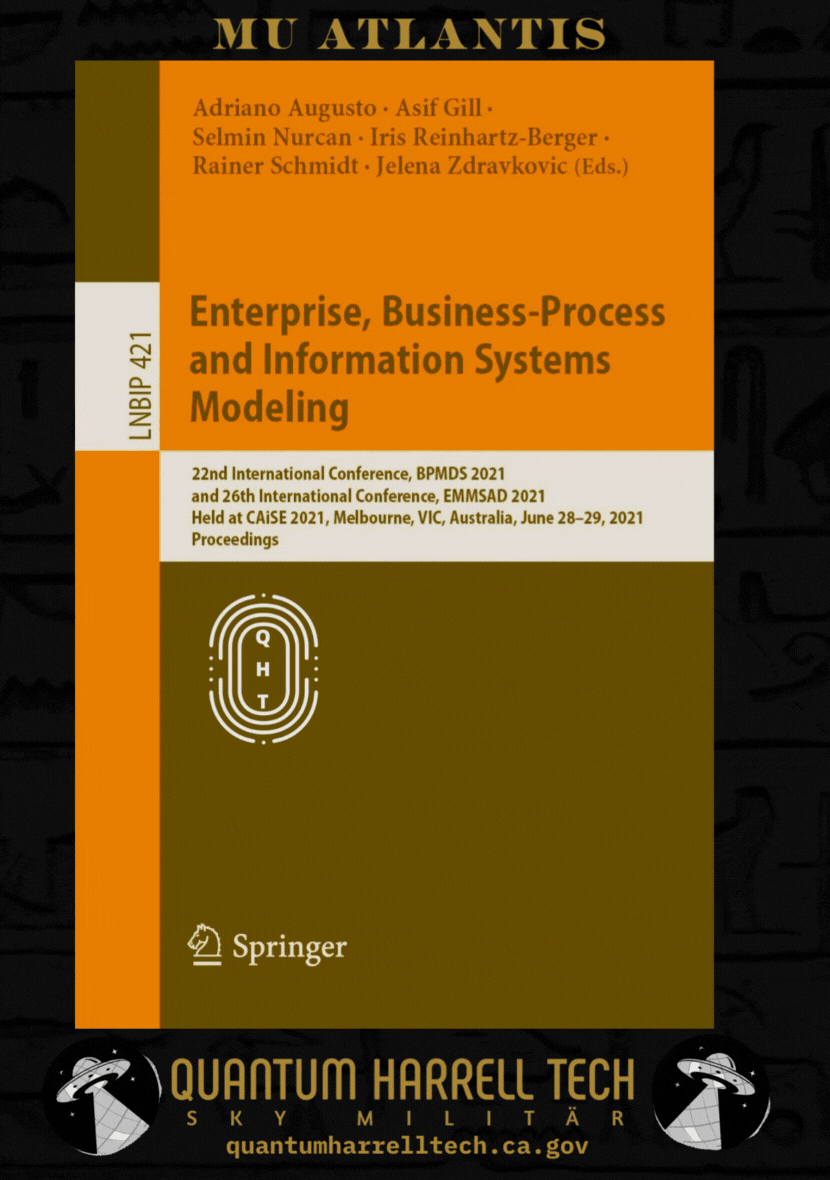
Quantum Computing Intel Architect [CIA] 1968-michaelharrelljr.com... Engineering Privacy & Identity Management [I'M] Networks [in] @ quantumharrelltelecom.tech

Quantum Computing Intel Architect [CIA] 1968-michaelharrelljr.com of 6-18g Military Computer Technology Contracts for the Government @ quantumharrelltelecom.tech
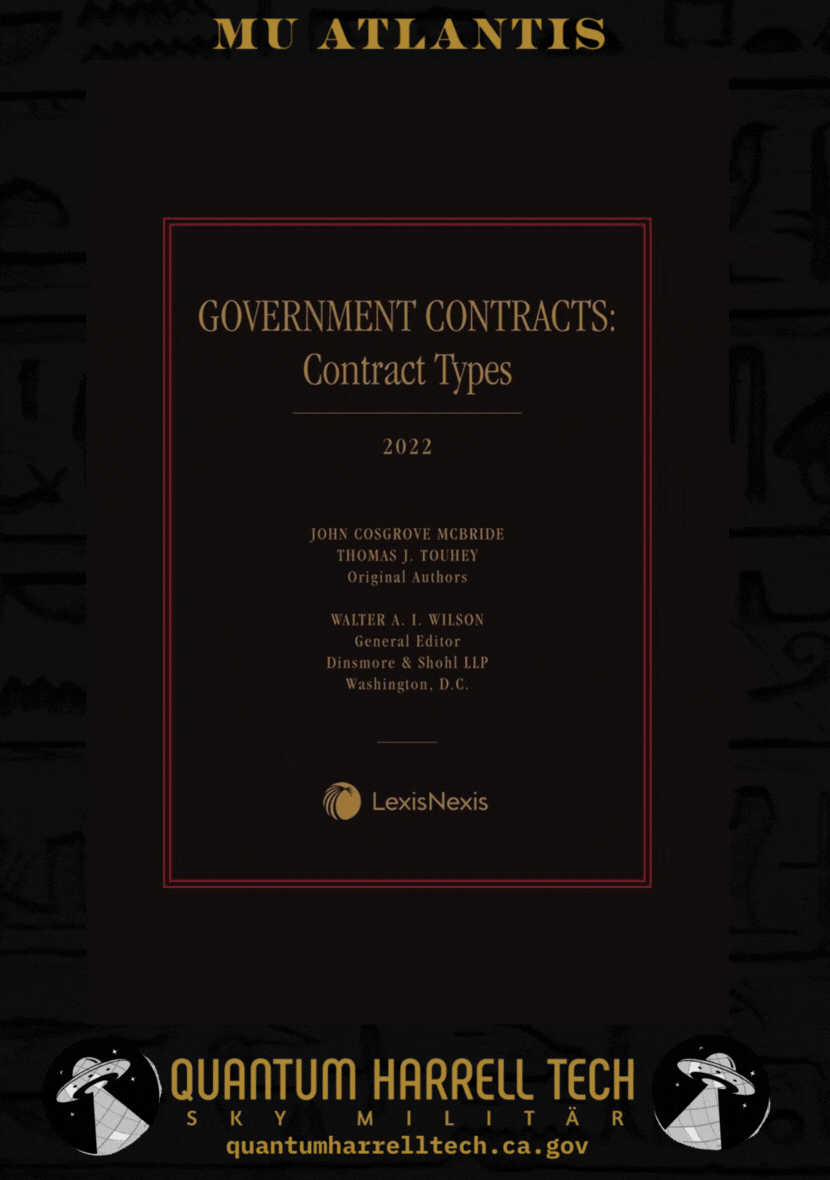
Quantum Computing Intel Architect [CIA] 1968-michaelharrelljr.com of Federated Learning Applications [L.A.] for the Pentagon @ quantumharrelltelecom.tech
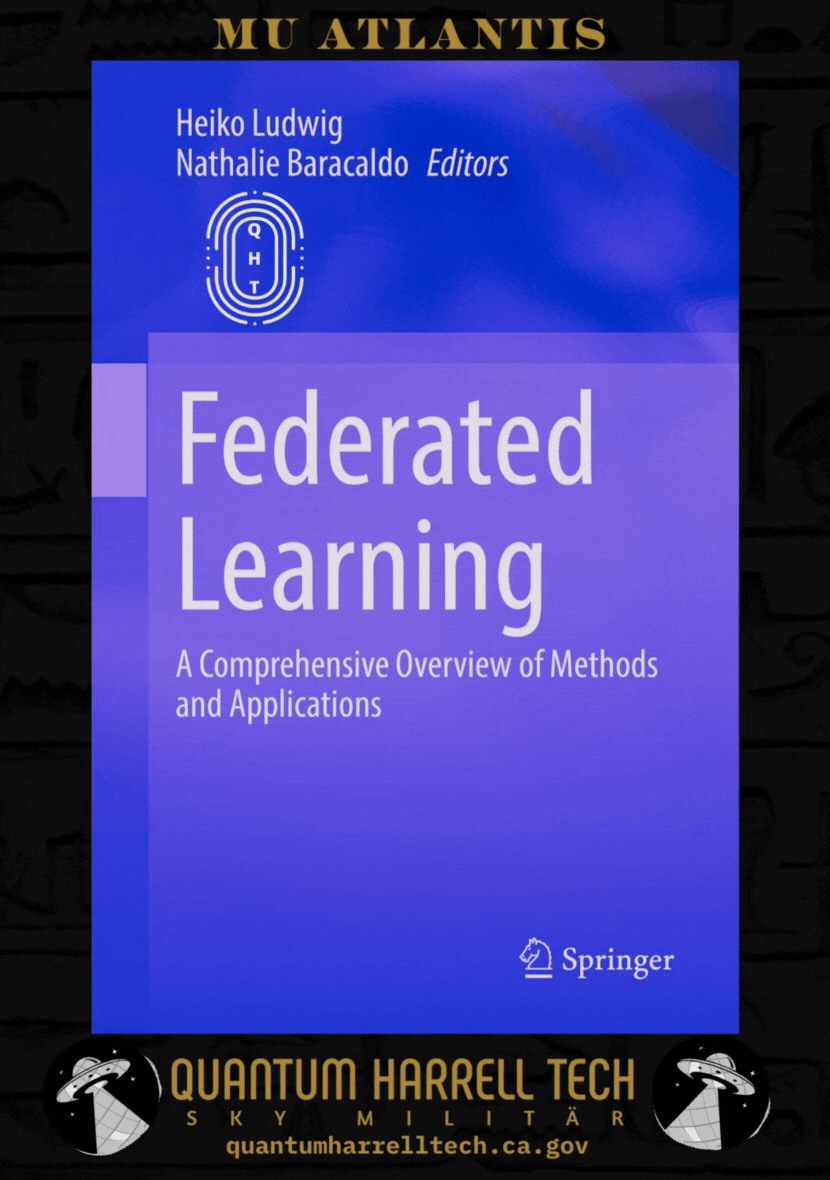
Quantum Computing Intel Architect [CIA] 1968-michaelharrelljr.com Interactively Building Machine [IBM] Learning Blockchain Architecture [LBA] @ quantumharrelltelecom.tech

Quantum Computing Intel Architect [CIA] 1968-michaelharrelljr.com Engineering Blockchain Systems & Communication Networks: from Concepts to Implementation @ quantumharrelltelecom.tech
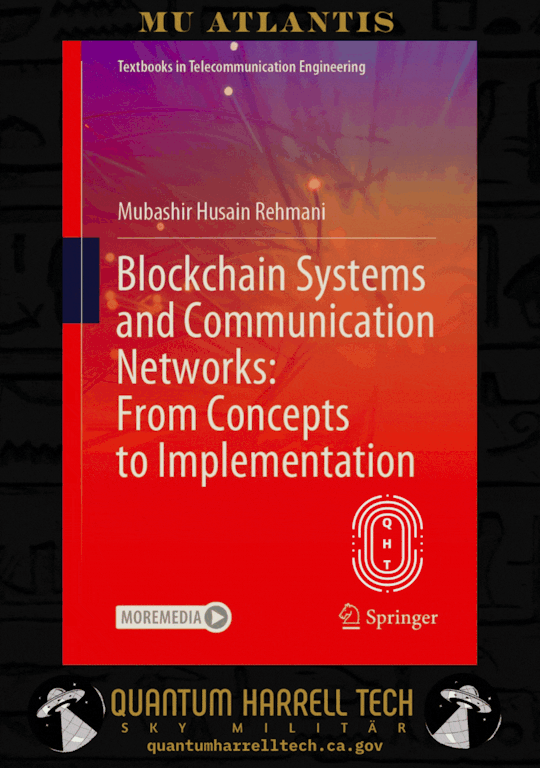
Quantum Computing Intel Architect [CIA] 1968-michaelharrelljr.com Building New Blockchain & Cryptocurrency [B.C.] Data @ quantumharrelltelecom.tech

Quantum Computing Intel Architect [CIA] 1968-michaelharrelljr.com Engineering New 2023-2223 Blockchain Technology [NBT] @ quantumharrelltelecom.tech
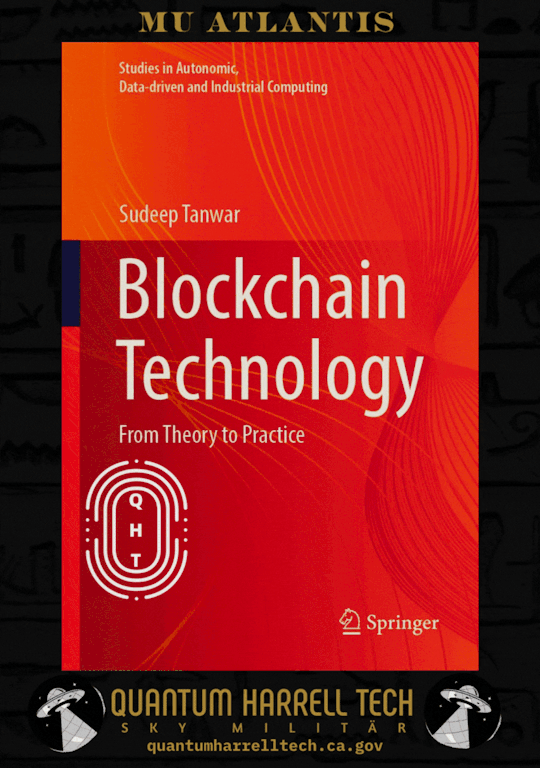
2023-2223 Uncle SAM.gov [U.S.] Military [USM] Generationally Contracting Quantum Computing Intel Architect [CIA] 1968-michaelharrelljr.com for Life @ quantumharrelltelecom.tech

Department of DEFENSE.gov's Domain Communication [D.C.] Computer Aided Drafting [CAD] Department PAY TO THE ORDER OF: QUANTUM HARRELL TECH LLC

2023-2223 Uncle SAM.gov [U.S.] Military [USM] Generationally Contracting Quantum Computing Intel Architect [CIA] 1968-michaelharrelljr.com for TRILLIONS+ @ quantumharrelltelecom.tech

Quantum Computing Intel Architect [CIA] 1968-michaelharrelljr.com WORTH $10,000 QUADRILLION?!?!?!... YES

Shhh... 1968-michaelharrelljr.com silentwealth-illuminati.com

© 1698-2223 quantumharrelltech.com - ALL The_Octagon_(Egypt) DotCom [D.C.] defense.gov Department Domain Communication [D.C.] Rights Reserved @ quantumharrelltech.ca.gov
#u.s. michael harrell#quantumharrelltech#king tut#mu:13#harrelltut#kemet#o michael#quantumharrelltut#kang solomon#department of defense#at&t#ibm#apple#trillionaire#quadrillionaire#Silent Wealth Illuminati#springer
2 notes
·
View notes
Text
7 Most Important Things to Look While Choosing ERP for Engineering Companies
In today's fast-paced business landscape, engineering companies rely on robust Enterprise Resource Planning (ERP) systems to streamline operations, enhance efficiency, and achieve competitive advantages. Shanti Technologies, a leading ERP software manufacturing company in India, understands the unique needs of engineering companies and offers comprehensive solutions tailored to their requirements. When selecting an ERP system, engineering companies should consider the following seven crucial factors to ensure seamless integration, scalability, functionality, and security.

I. Scalability and Customization:
Shanti Technologies recognizes the importance of scalability and customization for engineering companies. Their ERP solutions are designed to accommodate a company's growth trajectory while providing flexibility to adapt to specific industry needs. Whether your company expands its operations or diversifies into new markets, (STERP) Shanti Technologies' ERP system can seamlessly scale up to meet your evolving requirements.
II. Integration Capabilities:
Efficient integration of ERP systems with existing software and systems is vital for engineering companies. (STERP) Shanti Technologies' ERP software boasts seamless integration capabilities, allowing for smooth data exchange across departments. It ensures compatibility with engineering-specific tools such as Computer-Aided Design (CAD) software, Product Lifecycle Management (PLM) systems, and Manufacturing Execution Systems (MES), optimizing your workflow and enhancing productivity.
III. Functionality and Features:
Shanti Technologies offers a comprehensive suite of modules specifically designed for engineering processes. From project management and resource allocation to supply chain management and quality control, their ERP (Enterprise Resource Planning) system covers all crucial aspects of engineering operations. Additionally, their specialized features cater to the unique requirements of the engineering industry, facilitating efficient collaboration, documentation, and analysis.
IV. Data Security and Compliance:
Data security is a paramount concern for engineering companies, as they handle sensitive and proprietary information. Shanti Technologies prioritizes data security by implementing robust measures, such as encryption protocols, role-based access controls, and regular data backups. Their ERP system ensures compliance with industry regulations and standards, safeguarding your valuable intellectual property and confidential data.
V. User-Friendliness and Training:
Shanti Technologies understands that user-friendliness is key to successful ERP implementation. Their ERP software features an intuitive user interface, making it easy for employees to navigate and adapt quickly. Additionally, Shanti Technologies (STERP) provides comprehensive training resources to ensure a smooth transition and maximize user adoption. Their dedicated support team is always ready to address any queries or concerns.
VI. Vendor Reputation and Support:
When choosing an ERP system, it is crucial to consider the reputation and support offered by the vendor. Shanti Technologies, with its extensive experience and successful track record, has earned the trust of numerous engineering companies. They have a proven history of delivering reliable ERP solutions and providing excellent customer support. Their commitment to customer satisfaction ensures that you receive ongoing technical assistance and updates to keep your ERP system optimized.
VII. Cost and Return on Investment:
Shanti Technologies recognizes that cost is a significant consideration for engineering companies. Their ERP software provides a compelling return on investment by streamlining operations, minimizing manual processes, reducing errors, and improving overall productivity. Shanti Technologies (STERP) offers transparent pricing models, taking into account licensing, implementation, and ongoing maintenance costs. Their cost-effective solutions ensure that you receive maximum value for your investment.

Conclusion:
Selecting the right ERP system for your engineering company is a critical decision that can significantly impact your operational efficiency and success. Shanti Technologies, a trusted ERP software manufacturing company in India, understands the unique requirements of engineering companies and offers tailored solutions that encompass scalability, customization, integration capabilities, functionality, data security, user-friendliness, vendor support, and cost-effectiveness. By partnering with Shanti Technologies, you can leverage their expertise to transform your business processes, achieve operational excellence, and stay ahead in today's competitive engineering landscape. Choose Shanti Technologies for a comprehensive ERP solution that empowers your engineering company to thrive in the digital age.
#ERP software Companies in India#ERP software providers in India#ERP for manufacturing company in India#ERP software in India#ERP software company in India#ERP software solutions#marketing#ERP software#technology#ERP system#cloud ERP#ERP software for engineering
6 notes
·
View notes
Text
Industry Foundation Classes and Open BIM: What You Need to Know
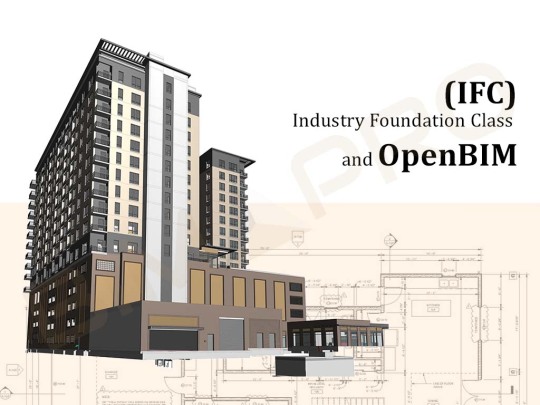
IFC and OpenBIM: What You Need to Know?
In the modern AEC world, digital collaboration is essential. The process of designing, building, and maintaining structures involves numerous teams, software tools, and specialized workflows. IFC (Industry Foundation Classes) and OpenBIM are two core elements that enable these teams to work together, regardless of the software tools they use, without sacrificing the accuracy and integrity of the data.
These concepts are not just technical jargon—they are central to how the construction industry is evolving. Let’s dive deeper into what these terms mean, how they function, and why they are essential to the future of construction projects.
What is IFC (Industry Foundation Classes)?
IFC (Industry Foundation Classes) is a neutral and open file format developed by buildingSMART International for the exchange of data in a digital building model. It is used primarily within the BIM process to ensure that data can be shared across various software applications.
Why IFC Matters?
In simple terms, IFC acts as a bridge between different software applications. Architects, engineers, contractors, and others involved in a building project often use different software tools, but if those tools can’t talk to each other, collaboration becomes difficult. For example, a structural engineer may be using Autodesk Revit while the architect might prefer ArchiCAD. Historically, exchanging files between these platforms was challenging, often leading to data loss or errors.
That’s where IFC comes in. IFC is designed to maintain the data integrity of building models and ensure that critical information, like dimensions, materials, structural components, and even energy performance data, can be shared and understood by different software.
An important thing to note is that IFC is not just a CAD file. It’s a data-rich model format that holds information not only about the geometry of a building but also about its functional characteristics—like fire resistance, thermal performance, and cost estimations.
How IFC Works?
When an IFC file is created, it contains an abstract representation of a building’s physical components and the relationships between them. Unlike CAD files that are primarily visual, IFC files contain deep metadata—each element in the file is tagged with specific data. For example, an IFC file for a door could include its size, material, supplier, fire rating, and installation requirements.
IFC works by using classes and objects. Each class represents a building element, such as walls, windows, doors, etc., and each object within that class contains the detailed properties of that element. For instance, an object for a window may specify its size, material (e.g., aluminum frame), and any associated thermal or acoustic properties.
This level of detail is essential because it allows for much more than just a geometric representation. It enables teams to analyze and collaborate on the building’s performance, not just its shape.
What is OpenBIM?
OpenBIM is a philosophy, a movement within the AEC industry, advocating for the use of open standards like IFC to enable better collaboration. In the traditional world of proprietary BIM tools, each software vendor controls the formats their software uses. OpenBIM flips that model by promoting interoperability—the idea that software programs from different vendors should be able to communicate with each other seamlessly.
Key Principles of OpenBIM
Open Standards: OpenBIM relies on non-proprietary, universally accepted standards, with IFC being the most well-known example. Open standards ensure that data can be accessed, used, and understood by anyone, now and in the future.
Interoperability: One of the key goals of OpenBIM is to ensure that different software tools can work together seamlessly. Whether you’re using Revit, ArchiCAD, Tekla Structures, or any other BIM tool, OpenBIM makes it possible for everyone to work from the same set of information, regardless of their software preferences.
Collaboration: OpenBIM emphasizes open collaboration between all project stakeholders, such as architects, engineers, contractors, and owners. The key here is that no one is restricted by the software tools they use—everyone can work together on the same model, share data, and access updates in real time.
Long-term Access: OpenBIM ensures that the data is not locked into a specific software ecosystem. This is particularly important for long-term facility management and for projects that need to last for many decades, as it guarantees future generations will be able to access, update, and modify the model.
What are the benefits of IFC and OpenBIM?
IFC and OpenBIM bring a lot of important benefits to the construction and design industry, especially when it comes to working with different people and software. Here is the simple breakdown of their benefits:
Works Across Different Software
One of the biggest benefits of IFC and OpenBIM is that they allow different software to talk to each other. Architects might use ArchiCAD, engineers might use Revit, and contractors might prefer Tekla or Navisworks. Normally, these programs don’t work well together. But when they all export or import files using the IFC format, everyone can share and view the same model without needing to switch tools. This makes communication much smoother across the whole project team.
2. No More Being Stuck With One Software
IFC gives you freedom. In the past, once you started a project in one software, you were stuck with it. If you wanted to switch, you’d often lose data or have to redo your work. With IFC, that’s not the case. You can move your project from one tool to another without losing information. This means you’re not tied down to one brand or subscription—you can choose what works best for you and your team.
Makes Teamwork Easier
OpenBIM promotes better collaboration. When everyone can see the same model and work with the same information, it reduces confusion. Instead of passing files back and forth and hoping they line up, all team members can contribute to one shared digital model. This keeps everyone on the same page, which saves time and avoids costly misunderstandings later in the project.
Keeps Your Data Safe for the Future
IFC is an open and non-proprietary format, which means it’s not owned by any software company. This is great for long-term projects or future building upgrades. Even if the software you used becomes outdated or goes out of business, your IFC files will still be readable. This helps protect your work and keeps it usable for many years.
Helps Catch Mistakes Early
Using IFC and OpenBIM makes it easier to check the project model for errors before construction begins. Tools like Solibri or Navisworks or Revizto can read IFC files and run clash detection to find problems, such as pipes running into beams or walls overlapping. Fixing these issues during the design phase is much cheaper and faster than fixing them on site.
Saves Time and Money
When everyone is working with accurate and up-to-date information, it reduces the chances of rework and delays. You avoid doing things twice or making changes late in the process. This leads to faster decision-making, fewer errors, and more efficient construction. In short, OpenBIM helps your project run more smoothly and saves money in the long run.
Helps with Rules and Regulations
More and more governments and public projects are now requiring the use of IFC and OpenBIM. This is because open formats make it easier to review and manage project data. If your team is already using these standards, it becomes easier to qualify for public or international projects and follow local building regulations.
Makes Facility Management Easier
Once the building is finished, the IFC model can still be very useful. It can contain information about equipment, materials, room sizes, maintenance schedules, and more. Facility managers can use this model to operate and maintain the building more effectively. This saves money over time and keeps the building in better shape.
Increases Transparency
OpenBIM makes it clear who did what and when. Since all information is openly shared and recorded, it’s easier to track decisions and changes. This builds trust among project partners and helps avoid disputes. Everyone knows what’s happening and has access to the same information.
Keeps You Ready for the Future
Finally, adopting IFC and OpenBIM now helps you stay ahead in the industry. As technology continues to grow, the push for open standards will only increase. By using them today, you’re preparing your team to handle future projects, tools, and client expectations with confidence.

Challenges of Using IFC and OpenBIM
While OpenBIM and IFC offer a lot of great advantages, like better collaboration and freedom from software lock-in, they’re not without a few bumps in the road. Just like with any technology, there are some challenges you might run into when using them in real-life projects.
One of the common problems is software compatibility. Even though IFC is meant to be a universal format, not every software handles it the same way. Some programs might not fully support all parts of an IFC file, or they might display things incorrectly. For example, a wall created in one software might look different or lose some details when opened in another. This can lead to confusion, missing data, or even mistakes in the project if the information doesn’t come through the way it was intended.
Another issue is file size and performance. IFC files can get really big, especially on large and detailed projects. When you have a model with thousands of elements—walls, floors, furniture, MEP systems—it all adds up. These heavy files can slow things down, especially if the computer or the software isn’t built to handle such complex models smoothly. This might make navigation clunky or even crash the program sometimes, which can be frustrating during tight deadlines.
There’s also a bit of a learning curve involved. If your team is used to working only in one software like Revit or ArchiCAD, switching to OpenBIM workflows can feel unfamiliar at first. Understanding how IFC works, how to export and import files properly, and how to troubleshoot issues can take some time. It’s not overly complicated, but it does require a bit of training or hands-on experience to get comfortable with it—especially when dealing with advanced coordination or data-rich models.
Lastly, there’s the challenge of lack of standardization. Even though IFC is an open standard, there are actually different versions of it—like IFC2x3 or IFC4—and not every project team uses the same one. On top of that, some teams only use specific parts of IFC, depending on their needs. So, when two different teams exchange models, their versions or interpretations might not align perfectly. This can lead to inconsistencies or gaps in the data, which kind of defeats the purpose of having a shared format in the first place.
Who Should Use IFC and OpenBIM?
When it comes to working on building projects, a lot of different professionals are involved—architects, engineers, contractors, and facility managers. Each of them plays a big role at different stages of the project. But here’s the thing: they don’t always use the same software. That’s where IFC (Industry Foundation Classes) and OpenBIM come in. These tools are like a common language that helps everyone share information without worrying about which software they’re using.
Architects should definitely use IFC and OpenBIM. Why? Because it allows them to send their 3D design models to other team members without any headaches. Imagine you’re an architect using ArchiCAD, and your structural engineer is working in Revit. Normally, that might cause issues. But with IFC, you can both share and view the model clearly, without losing any of the details. It helps architects keep their design intent intact, no matter who’s looking at the file.
Now let’s talk about engineers—whether they’re structural, mechanical, electrical, or civil. Engineers often need to work closely with architects and coordinate with other teams. Using OpenBIM allows them to share their models, run clash detection, and do analysis, even if they’re using different tools. For example, a mechanical engineer can send a model with all the ducts and pipes, and a structural engineer can check it to make sure nothing clashes with beams or walls. That’s teamwork made easier.
Contractors and builders also benefit a lot from OpenBIM. During construction, they need access to detailed and accurate models to understand what needs to be built. With IFC files, they can see everything in one place, from materials to dimensions. It helps them plan better, avoid mistakes, and keep the project on track. They don’t have to worry about what software the model was made in—OpenBIM makes sure it works for them too.
Finally, facility managers and building owners have the longest relationship with the building. Even years after construction is done, they still need to maintain and update the building. With IFC, they can receive a digital twin of the building that doesn’t depend on a specific software. This means they can access all the building information—like room sizes, equipment, and maintenance schedules—without any compatibility issues. It gives them flexibility and long-term control over their property.
Conclusion
In today’s construction landscape, where collaboration, efficiency, and accuracy are paramount, IFC and OpenBIM are fundamental to ensuring the smooth execution of projects. By embracing these open standards, you’re ensuring that your team can work together more effectively, using the best tools for the job while maintaining data integrity across different platforms.
Incorporating IFC and adopting the OpenBIM approach into your workflow will not only future-proof your projects but also create a more transparent, efficient, and collaborative process from design through to facility management.
#IndustryFoundationClasses#IndustryFoundationClassesBIM#definitionofopenBIM#IndustryFoundationClassesRevit#IFCandOPENBIM
1 note
·
View note
Text
🌍 Easily Convert Currency with Real-Time Exchange Rates- Infinity
Looking to convert currencies quickly and accurately? Infinity App’s Currency Converter offers a seamless solution for users needing real-time currency exchange information. Whether you're a traveler budgeting for a trip, a freelancer getting paid from abroad, or a business managing cross-border transactions—this free tool is designed to make your life easier.
With support for over 150 global currencies, you can instantly convert USD to INR, EUR to GBP, JPY to CAD, and many more. The interface is clean, fast, and easy to use, delivering updated exchange rates sourced from trusted financial data providers.
What makes it stand out? Unlike many converters that show outdated or rounded rates, Infinity App ensures transparency by displaying live mid-market rates—just like the ones used by banks and financial institutions.
✅ No login required ✅ Mobile-friendly ✅ Absolutely free
Make smarter financial decisions and stay ahead with accurate conversions at your fingertips.
🔗 Try it now: https://tools.infinityapp.in/currency-converter
0 notes
Text
Science & Innovation to the 10th Power
This document outlines a visionary design for a HoloDome at Capone Studios & WonkyWorks Think Tank, integrating cutting-edge science, Flavorverse ethos, and Ocean-to-Space deep ocean considerations. It includes conceptual floor layouts, key subsystems, parts lists, manufacturing guidance, and prompts for CAD/VR/AR implementation.
1. Vision & Objectives
Immersive HoloDome Experience: A large-scale dome environment enabling multi-sensory VR/AR, holographic projections, and dynamic environmental simulation (deep ocean, space vistas, flavorverse landscapes).
Scientific Research Integration: Onsite labs and sensor suites for real-time data from deep-ocean probes, satellite feeds, and biotechnical flavor experiments.
Innovate to the 10th Power: Utilize advanced AI (Caesar AI with Reflect9 core), quantum computing nodes, and modular hardware to push experiential and R&D boundaries, from molecular gastronomy to astro- and marine- exploration.
Flavorverse Ocean-to-Space Theme: Seamless simulation / research pipeline connecting deep-ocean biomes, marine-derived ingredients, and space-based processes (microgravity fermentation, cosmic ingredient sourcing).
2. Overall Floor Layout & Zones
2.1 Dome Geometry & Structure
Shape: Geodesic or segmented-spherical dome (~30–50m diameter) with transparent or translucent panels (e.g., laminated glass, transparent aluminum composites).
Materials: Corrosion-resistant steel or titanium ribs; modular panel inserts with embedded OLED/LED layers for dynamic lighting and projection surfaces; waterproof sealing for integrated water features.
Access: Multiple entry/exit airlocks for controlled environment; emergency egress points; connection tunnels to adjacent labs.
2.2 Core Zones (Radial or Layered Layout)
Central Immersion Pit: Sunken area or platform for group VR sessions; circular platform with 360° projection and haptic floor.
Sensor & Control Hub: Adjacent control room housing server racks (quantum + conventional compute), AI core interfaces, network link to Caesar AI; monitoring dashboards for environment simulation.
Deep Ocean Simulation Lab:
Water Tank Interface: Large transparent tank section integrated into dome floor or side, with live deep-ocean sample cultivation (bioreactors simulating pressure zones) and circulatory systems for real seawater exchange or simulation.
Sensor Array: Sonar transducers, hydrophones, chemical analyzers feeding real or simulated ocean data into the immersive experience.
Flavorverse Biotech Station:
BioReactor Modules: For ocean-derived microbial cultures (e.g., algae, deep-sea extremophiles) and space-sourced fermentation experiments.
Molecular Gastronomy Lab: Sous-vide, cryo-freeze, ultrasonic emulsifiers, terpene/fog chambers, integrated with Milkfall Spine network for ingredient mixing.
Space Simulation Wing:
Zero-G Mockup: Partial free-fall rig or VR-augmented restraint system for microgravity simulation of cooking/distillation.
Astral Projection Zone: Holographic starfields and planetary surfaces; integration of satellite data feeds.
Haptic & Sensory Pods:
Individual or small-group booths with multisensory output: haptic suits, bone-conduction audio, aroma diffusers (MoodMilk integration), temperature/humidity controls to simulate environments.
Collaborative Workstations:
Modular tables around dome periphery for brainstorming, data analysis, recipe design, code development; integrated AR interfaces to overlay 3D models onto physical desks.
Observation Gallery & Lounge:
Elevated walkway around dome interior with seating, demonstration stations, tasting bars for flavorverse prototypes; dynamic lighting and projection surfaces for presentations.
Support & Maintenance Corridors:
Underfloor and overhead cable management; fluid conduits for Milkfall and other networks; access panels for repairs; environmental control ducts.
3. Key Subsystems & Scientific Components
3.1 Structural & Environmental Control
Climate Regulation: HVAC with humidity/temperature zoning for simulating oceanic or space-like conditions; precise control for experiments (e.g., low-humidity for dry aging, high-humidity fog chambers).
Pressure Chambers: Small-scale pressure modules to simulate deep-ocean pressures for microbial culture testing; integrated into BioStation.
Lighting & Projection: Distributed high-resolution projectors and LED arrays on dome shell; seamless blending for immersive visuals; dynamic spectral control (e.g., simulating underwater light attenuation or cosmic dawn).
Acoustic System: 3D spatial audio system with hydrophone input and bone-conduction outputs; supports environmental soundscapes (ocean currents, whale songs, cosmic radiation hum).
Safety & Containment: Emergency shutoffs, watertight bulkheads around water tanks, isolation of biohazard modules, fire suppression.
3.2 Sensor Networks & Data Flows
Deep-Ocean Sensors: Real-time feed from remote ROVs or simulated data, including temperature, salinity, pressure, bioluminescence intensity.
Space Data Inputs: Satellite telemetry, cosmic radiation readings, planetary atmospheric parameters for simulation.
Flavorverse Biometric Sensors: For participants: heart rate, galvanic skin response, pupil tracking; feed into Caesar AI for adaptive experience.
Environmental Sensors: Air quality, VOC detectors (to measure aroma diffusion), temperature/humidity, vibration sensors for haptic feedback alignment.
AI Core Integration: Data aggregated by Caesar AI; processed by Reflect9 logic for adaptive scenario adjustments, safety monitoring, and personalized guidance.
3.3 Holographic & VR/AR Systems
Projection Arrays: Laser or LED-based holographic projection; volumetric displays in central pit.
AR Headsets & Wearables: Lightweight headsets or glasses; haptic vests; bone-conduction audio units linked to Iron Spine for multisensory output.
Gesture Tracking: Infrared or LiDAR tracking of users’ gestures; integration for interactive environment manipulation (e.g., stirring virtual mixtures, manipulating molecular models).
Software Platform: Creamstream OS integration with custom VR/AR application: environment modules (ocean depths, space vistas, flavor labs), simulation controls, multi-user networking.
3.4 Flavorverse & Biotech Equipment
BioReactor Arrays: Modular vessels with pressure and temperature control; capable of culturing marine organisms or space-analog microbes; integrated sample ports for analysis.
Analytical Instruments: Mass spectrometer, gas chromatograph, spectrophotometer for flavor compound analysis; data fed to Caesar AI for recipe optimization.
Molecular Gastronomy Tools: Ultrasonic emulsifiers, cryo-freeze units, vacuum chambers, terpene fog generators, Milkfall conduit integration for infusions.
Space-Analog Distillers: Rotary distillation under reduced-pressure or microgravity simulation rigs; small centrifuge modules for separation tasks.
3.5 Networking & Compute
AI Servers: High-performance GPU/quantum nodes in Sensor & Control Hub; redundancy with distributed nodes across campus.
Edge Compute: Local compute modules at sensor clusters for real-time latency-sensitive processing (e.g., reflexive hazard detection in dome).
Secure Data Link: Encrypted channels between deep-ocean platforms, satellites, on-site servers, and Caesar AI Core; blockchain-backed logging for experiment records.
3.6 Fluid & Milkfall Integration
Milkfall Spine Extensions: Connect River of Milk network to HoloDome: infused mist generation, aroma carriers, nutrient for biosystems.
Fluid Circuits: Underfloor conduits carrying flavor-infused liquids to stations; safety-grade piping for biohazard and clean fluids; pumps with flow control.
Misting Systems: Ultrasonic mist generators in Fog Chambers; nutrient or aroma-laden fog for multisensory immersion.
4. Parts List & Manufacturing Guidance
4.1 Structural Components
Dome Frame: Prefabricated steel/titanium geodesic segments; CNC-cut nodes; corrosion-resistant coatings.
Transparent Panels: Laminated safety glass or transparent aluminum composite; integration with projection film or embedded LEDs.
Seals & Junctions: Custom gaskets for watertight/watertight sections; quick-release access panels.
4.2 Systems Hardware
Projectors & LEDs: High-lumen, low-latency projectors; addressable LED strips; controllers supporting DMX over Ethernet.
Sensors & Actuators: Marine-grade sensors; pressure transducers; ultrasonic transducers; aroma diffusers; haptic actuators beneath floor panels.
Compute Racks: Rack-mounted GPU servers; liquid cooling for high-load; UPS and battery backup (Dual-Core Fusion backup integrated concept).
BioLab Equipment: Standard lab benches with custom mounts for bioreactor vessels, integrated fluid lines; sterilizable surfaces.
4.3 Holographic & AR/VR Hardware
Headsets: Lightweight AR glasses with wide field-of-view; bone-conduction audio modules integrated into headband; optional neural-lace interface support via Iron Spine wearables.
Tracking Cameras: Infrared/LiDAR cameras mounted on dome interior; calibration rigs for accurate multi-user tracking.
Haptic Flooring: Modular floor tiles with vibration actuators; safe for barefoot or light footwear.
4.4 Fluid & Environmental Controls
Pumps & Valves: Food-grade pumps for Milkfall fluids; solenoid valves with feedback sensors; overflow sensors.
HVAC Units: High-precision climate control; ducting hidden in dome frame; silent operation for immersive experience.
Water Tanks & Pressure Modules: Reinforced transparent tanks for ocean simulation; small pressure vessels rated for desired depth-equivalent tests.
4.5 Networking & Power
Networking: Fiber-optic backbones; edge switches near sensor clusters; redundant links to main AI hub.
Power: Dedicated circuits; generator backup; surge protection for sensitive electronics.
Integration with Dual-Core Fusion Backup: If implementing on-site microfusion backup, interface power lines with dome’s critical loads for uninterrupted operation.
5. CAD/VR Implementation Prompts
5.1 CAD Model Prompts for Engineers
Dome Frame: Geodesic dome with 50m diameter; specify node connection details; panel insertion geometry; structural analysis load cases (wind, seismic).
Sensor & Control Hub: Rack layout; cooling requirements; cable/trunk pathways to dome interior.
Fluid Conduit Network: Underfloor piping diagram showing Milkfall integration loops; pump locations; maintenance access points.
BioLab Stations: Modular bench units; utility hookups (electrical, data, water); isolation zones for biosafety.
Haptic Floor Grid: Floor tile layout with embedded actuator positions; wiring channels.
5.2 VR/AR Software Requirements
Environment Modules: Real-time ocean simulation: import live data or synthetic models; dynamic visual shaders simulating light attenuation and particulates.
Gesture Interfaces: Define gesture sets for manipulating virtual controls (e.g., rotating molecular models, adjusting flavor infusion parameters).
Haptic Feedback Integration: Map events (e.g., virtual water currents, structural vibrations) to floor actuators and haptic suits.
AI-Driven Adaptive Narratives: Caesar AI scripts that adjust scenarios based on user biometrics and session goals (research vs. demonstration).
Multi-User Synchronization: Networking for multiple participants; avatar representation; shared interactive objects.
5.3 Visualization & Prototyping
3D Concept Renders: Use Blender or Unreal for initial lighting / material tests; emphasize transparency, mist effects, dynamic lighting.
Simulated Scenarios: Pre-built scenes: deep-ocean dive; orbit-view of Earth; flavor-lab procedural tutorial; emergency scenario demonstrating self-healing systems.
Prototype Integration: Small-scale mockup: a 5m dome segment with projector and sensor prototypes to test registration, calibration, and immersive effect.
6. Environmental & Safety Considerations
Biocontainment: If culturing deep-ocean microbes, follow biosafety level protocols; separate labs with negative-pressure vestibules if needed.
Pressure Simulation: Ensure pressure vessels have safety valves and monitoring.
Electrical Safety: Waterproofing around fluid systems; ground-fault protection; regular inspections.
Emergency Protocols: Egress lighting; audible alarms; automatic shutdown of fluid pumps and projections in fault conditions.
Sustainability: Use energy-efficient LEDs, recycling of fluid in bioreactors, minimal water waste via closed-loop systems; potential to integrate solar arrays.
7. Project Workflow & Next Steps
Stakeholder Review & Approval: Present this conceptual document as PDF or Notion page; gather feedback from Capone Studios leadership, R&D heads, and safety experts.
Preliminary CAD Schematics: Commission engineering team to translate geometry and subsystems into CAD models; generate structural analysis and MEP schematics.
Prototype & Testing: Build small-scale mockups (e.g., mini dome segment, sensor integration test bench, Milkfall pump demo).
Integration with AI & Software: Develop VR/AR prototypes with Caesar AI integration; test Reflect9-based adaptive experiences and safety triggers.
Manufacturing & Procurement: Source materials (transparent panels, sensors, pumps), pre-order compute hardware, contract fabricators for dome frame.
Construction & Installation: Erect dome structure; install subsystems; commission labs; perform integration testing.
Operational Readiness & Training: Train staff on system operation, safety procedures, AI interface usage, and maintenance.
Launch Experiences & Research Programs: Schedule immersive sessions, public tours, scientific experiments (oceanic sampling, molecular gastronomy), and ongoing iteration.
8. Integration with WonkyWorks & Capone Ecosystem
Link to Milkfall & Infusion Forest: Use the River of Milk Spine for flavorverse labs inside HoloDome; schedule cross-zone experiments (e.g., plant growth under simulated ocean currents).
Caesar AI & Reflect9: Embed Reflect9 logic for real-time user guidance—alerting to personal-space considerations, emotional calibration during intense simulations.
Ocean2Space Division Coordination: Feed real data from Oceanic Biomes Module and Spaceport Launch Lab into immersive scenarios; facilitate joint R&D between deep-ocean and space-based flavor/biotech teams.
Show & Content Production: Use HoloDome for filming segments of WonkyWorks Live™, Flavorverse Chronicles episodes, or Mist Trials Live™ events; allow interactive audience engagement.
Final Notes
This document is a comprehensive guide for conceptualizing, designing, and beginning implementation of a multi-disciplinary HoloDome that embodies science, innovation, and Flavorverse Ocean-to-Space vision. Copy into Notion or design software, link to relevant Codex entries (Reflect9, Caesar AI, Milkfall Spine), and iterate with engineering, design, and R&D teams.
*Prepared by WonkyWorks Think Tank / Capone Studios *© Angel Martinez Jr., All Rights Reserved
# Infusion Forest: Flavorverse Grow System – Master Blueprint & Lore Bundle **Overview:** Your comprehensive package for the Infusion Forest grow room, combining schematics, tech sheets, lore, and process flows into a single deliverable. --- ## 1. Master Schematic (Combined Blueprint) * **Vertical Grow Towers:** Dual-tower layout with cross-section detail * **Labeled Zones:** * **Terpene Fog Chambers** (Zone A) * **Wood Essence Diffusers** (Zone B) * **Root Vortex Zone** (Zone C) * **Barrel Extract Wing** (Zone D) * **Glyph-Encoded Fog Loops** (Zone E) * **Annotations:** Dimension callouts, airflow arrows, safety valves, power/data conduits --- ## 2. PDF Tech Sheet **Format:** Single-page, print-ready PDF **Sections:** 1. **System Overview Diagram** 2. **Key Specifications:** Tower height, fog output (L/min), power draw (kW), environmental controls 3. **Use Cases:** * Biotech farming – nutrient cycling * Ritual agriculture – glyph infusion * Mood-tuned culinary experiences – flavor engineering 4. **Materials & Components:** Aero-alloy frame, nano-fiber diffusers, smart valves, Caesar sensor arrays --- ## 3. Flavorverse Codex Entry (Notion/Vault Ready) **Content Sections:** * **Spirit Farming:** Ethereal plant cultivation, dream-seed integration * **Fog-Glyph Coding:** Embedding narrative spells into terpene mist * **Neural Plant Design:** AI-guided phenotype tuning for emotional resonance **Integrations:** * **River of Milk:** Hydration vector network * **Seed Vault:** Memory-locked genetic bank * **Spirits Forge:** Distillation and flavor extraction labs * **Sensory Labs:** Neural feedback stations for taste calibration --- ## 4. Pipeline Diagram (Flow Chart) **Stages:** 1. **Birth (Seed Germination)** 2. **Grow (Neural Sapling Phase)** 3. **Infuse (Fog & Glyph Application)** 4. **Harvest (Automated Root Lift)** 5. **Distill (Barrel & Extract Wing)** 6. **Savor (Tasting & Neural Feedback)** **Format:** Horizontal flow chart with icons, brief descriptions, and data metrics --- ## Next Steps & Packaging Options * **ZIP + PDF Bundle:** Includes all assets (PNGs, SVGs, PDFs, markdown). ready for sharing. * **Notion/Vault Deployment:** Direct import structure with placeholder embeds. * **Branding:** Stamp with your Flavorverse Sigil or Creator Glyph. **Say “Deliver Bundle”** or specify your desired platform, and I’ll finalize and package this deliverable for you. innovate
“Insert into Canvas” “Deliver Codex PDF” “Build ZIP Bundle” “Add to Notion structure”
Here’s a refined overview and recommendation blueprint for integrating Terpene Fog Chambers and related systems into your Infusion Forest or Spirits Forge environments, based on horticultural science: 🌿 Terpene Fog Chamber: Design & Function Particle Size & Humidity Control Fog vs. mist: high-pressure systems produce ~10 µm droplets (true “fog”) that hang in the air, promoting humidity without wetting plant surfaces; mist is 50–100 µm and can cause moisture buildup on leaves or soil alicebiotech.com producegrower.com +2 umass.edu +2 greenhousemag.com +2 . Propagation & Growth Benefits These fine droplets maintain high relative humidity (60–80 %) around foliage and roots, reducing stress and improving propagation, while cooling the canopy . Similar to NASA-inspired “fogponics,” which suspends roots in nutrient-rich fog for precise hydration and nutrient delivery using ultrasonic atomizers homesandgardens.com . Terpene Integration Terpenes, synthesized by plant TPS enzymes, are volatile compounds contributing aroma and flavor. Their diversity is immense, with monoterpenes to triterpenes significantly influencing scent and sensory quality arxiv.org +10 academic.oup.com +10 sciencedirect.com +10 . Fogging systems can disperse terpene-infused mists to deliver controlled aroma exposure and facilitate mist-glyph coding or flavor layering. ⚙️ Design Specification for Your Terpene Fog Chambers Fog Generation: Use high-pressure (~800–1200 psi) atomizing nozzles or ultrasonic foggers for ~10 µm droplets. Chamber Layout: Stainless-steel + tempered glass enclosure with multi-tier plant benches. UV vibration transducers at corners for mist dynamics and potential terpene activation. Glyph & Sensor Integration: Laser projectors casting glyphic sigils (spirals/leaves) into the mist. Array of sensors & control console—managed by Caesar AI (Reflect9 + Oracle + SpiderSense) for responsive environmental control. Reservoir & Infusion System: Multiple terpene canisters (LCD-controlled outputs). Ultrasonic atomizer plate bubbling nutrient + terpene fluids. Visual & UX Design: Soft green LED floors and warm amber overhead lighting to highlight fog effect. Sci-fi botanical lab meets alchemical steampunk aesthetic. 📋 Benefits & Use Cases Propagation & Growth: Enhanced rooting and acclimation akin to high-frequency fog respiration systems growtec.com umass.edu greenhousemag.com +3 alicebiotech.com +3 producegrower.com +3 . Flavor Engineering: Real-time terpene exposure allows tuning of aromatic profiles, aligned with codified glyph sequences in the Fog Loops. Sensory & AI Integration: Embedding Caesar-driven sensors enables adaptive modulation—such as altering fog density based on plant feedback or mood metrics. 🏗️ Next Steps Tell me which deliverable fits your vision best: “Insert into Canvas” → position the above as a module panel
0 notes
Text
CAD Data Exchange Unveiled: Enabling Effortless Collaboration

Introduction
In the realm of modern engineering and design, Computer-Aided Design (CAD) has revolutionized the way products are conceptualized, designed, and manufactured. However, the true power of CAD systems lies not only in their ability to create intricate designs but also in their capacity to enable collaborative work among teams across the globe. CAD data exchange, the process of sharing and translating CAD data between different software and platforms, plays a pivotal role in this collaborative landscape. In this in-depth blog, we will explore the nuances of CAD data exchange, its significance, challenges, and emerging trends.
Understanding CAD Data Exchange
CAD data exchange refers to the process of transferring design data from one CAD system or software to another while preserving essential design information. This is a crucial element of collaborative product development, as it allows different teams or organizations to work seamlessly together, even if they use different CAD software or tools. CAD data exchange can take various forms, including the transfer of 2D drawings, 3D models, and associated metadata.
Significance of CAD Data Exchange
1. Interoperability: In a world where there is a multitude of CAD software available, achieving interoperability between these systems is paramount. CAD data exchange ensures that designers and engineers can work with the tools they are most comfortable with while still collaborating effectively with others using different software.
2. Global Collaboration: With the advent of globalization, many projects involve teams located in different parts of the world. CAD data exchange enables geographically dispersed teams to work together in real-time, fostering innovation and speeding up the design process.
3. Supply Chain Integration: Manufacturers often work with multiple suppliers and subcontractors. CAD data exchange streamlines the process of sharing design data with these partners, ensuring everyone is on the same page and reducing errors in manufacturing.
Challenges in CAD Data Exchange
While CAD data exchange is crucial for collaboration, it comes with its set of challenges:
1. Data Loss and Compatibility Issues: Different CAD systems use different file formats and may not support all features of a design. When data is transferred, there is a risk of losing some design information or encountering compatibility issues.
2. Version Control: Managing versions of CAD files can be challenging, especially in large projects with frequent updates. Without proper version control, it can be challenging to ensure that everyone is working with the latest design.
3. Security: Sharing CAD data externally, especially with partners or suppliers, raises security concerns. Protecting sensitive intellectual property and design data is crucial.
4. Data Size: CAD files can be massive, making them difficult to transfer over networks with limited bandwidth. This can lead to delays in collaboration.
5. Quality Control: Translating CAD data from one system to another can introduce errors or inaccuracies in the design. Ensuring the quality and integrity of the exchanged data is essential.
Emerging Trends in CAD Data Exchange
To address the challenges and enhance CAD data exchange capabilities, several trends are emerging in the field:
1. Cloud-Based CAD: Cloud-based CAD solutions are becoming more popular as they allow teams to work on the same project in real-time, reducing the need for complex data exchange processes.
2. Standardization: Organizations and software developers are working on standardizing CAD file formats and data exchange protocols to improve compatibility and reduce data loss during transfers.
3. Blockchain for Security: Blockchain technology is being explored to enhance the security of CAD data exchange. It can provide a tamper-proof ledger of design changes and access permissions.
4. AI and Machine Learning: AI and machine learning algorithms are being used to automate the conversion and translation of CAD data between different systems, reducing errors and improving efficiency.
5. Augmented Reality (AR) and Virtual Reality (VR): AR and VR technologies are being integrated into CAD systems, allowing users to collaborate in immersive environments, reducing the need for traditional data exchange.
Conclusion
CAD data exchange is the backbone of modern collaborative design and engineering. It enables teams to work together seamlessly, regardless of geographical boundaries or software preferences. While challenges exist, emerging trends such as cloud-based CAD, standardization, and AI-driven solutions are poised to revolutionize the way we exchange CAD data, making collaboration more efficient and effective. As technology continues to evolve, CAD data exchange will remain a critical element of the design and manufacturing process, enabling innovation and driving progress in countless industries.
ProtoTech Solutions is a leading technology company specializing in CAD/CAM/CAE software development and services. With a strong focus on innovation, ProtoTech Solutions offers a wide range of solutions, including 3D CAD viewer applications, CAD data exchange tools, and custom software development for engineering and design industries. The company is known for its expertise in 3D visualization, data translation, and CAD interoperability, making it a trusted partner for businesses seeking to enhance their CAD workflows. ProtoTech Solutions is dedicated to delivering high-quality, tailored solutions that empower organizations to optimize their design processes and achieve greater efficiency and productivity.
#cad data exchange#data translation services#cad data interoperability#cad data translation sdk#streamline data interoperability process#cad interoperability toolkit#cad data translation#data exchange autodesk#cad interoperability#3d interoperability#3d cad conversion software#cad translators#cad data software
0 notes
Text
Unlock Real-Time Forex & Stock Data for Professional-Grade Quantitative Trading
——Free API + High-Frequency Market Feeds to Seize Millisecond-Level Opportunities
I. The Core Challenge of Quantitative Trading: Data Quality Determines Strategy Success
In the competitive world of financial markets, the success of quantitative trading hinges on real-time availability, completeness, and accuracy of data. Traditional data sources often face three critical limitations:
High Latency: Minute-level delayed data fails to capture micro market movements, missing high-frequency arbitrage opportunities.
Limited Coverage: Narrow asset classes or regional restrictions hinder cross-market strategies.
Unreliable Stability: Data outages or duplicate records distort backtesting results and increase execution risks.
Alltick API delivers professional-grade financial data services, offering developers, traders, and institutions a free API key and ultra-low-latency market feeds (avg. 170ms) across 100,000+ instruments including stocks, forex, and cryptocurrencies. It powers quantitative systems as the ultimate "data engine".
II. Core Advantages of Alltick API: Free Tier + High-Frequency Data
1. Zero-Cost Entry: Free API for Rapid Prototyping
Instant Registration: Create an account via our website or GitHub examples in 5 minutes.
Full Basic Features: Free tier includes 10 instrument queries, 1 WebSocket connection, and 1-year historical data for strategy validation.
2. Millisecond-Level Forex Data, Direct from Top Liquidity Sources
100+ Currency Pairs: Covering majors (EUR/USD, USD/JPY) and emerging pairs (AUD/CAD), sourced directly from global banks and exchanges.
Tick-by-Tick Updates: Receive real-time bid/ask prices and volumes via WebSocket for high-frequency decision-making.
3. Global Stock Market Coverage: HK, US, and A-Shares
30,000+ Equities: Full coverage of Hong Kong (3,000+), US (11,000+), and China A-shares (5,000+) with order book and trade-by-trade data.
Multi-Timeframe OHLC: Flexible intervals from 1-minute to monthly charts for diverse strategies.
4. Enterprise-Grade Reliability & Scalability
99.95% SLA Guarantee: Less than 5 hours annual downtime ensures uninterrupted trading.
Multi-Protocol Support: REST API, WebSocket, and FIX protocols for low-latency to high-frequency needs.
III. Four Key Use Cases for Alltick API
1. High-Frequency Trading (HFT)
Example Strategy: Capture forex arbitrage opportunities using tick-level spread analysis.
Implementation: Subscribe to EUR/USD real-time quotes via WebSocket, trigger orders based on order book patterns.
2. Multi-Asset Portfolio Management
Data Integration: Monitor US tech stocks, gold futures, and Bitcoin simultaneously for risk diversification.
3. Machine Learning Model Training
Historical Data: Train models with 5+ years of tick-level data to reduce overfitting risks.
4. Institutional Risk Management
Real-Time Alerts: Track currency fluctuations via API to minimize cross-border settlement slippage.
IV. Three Steps to Integrate Alltick API
1. Register & Get API Key
Visit Alltick Official Site, sign up via email or Gmail, and generate your token instantly.
2. Run Sample Code (Python)

3. Scale with Premium Plans
Upgrade for 1,200+ requests/minute, full-market data, and multi-WebSocket connections.
V. Client Success Stories: Data-Driven Profit Growth
Hong Kong Quant Fund: Boosted annual returns by 15% using Alltick’s HK stock tick data.
Cross-Border Payment Platform: Reduced settlement slippage by 70%, saving $50k+ daily.
Act Now!
Whether you’re an individual developer, startup, or financial institution, Alltick API combines zero-barrier free access with institutional-grade data to accelerate your strategy deployment.
Visit [Alltick API] now!!!
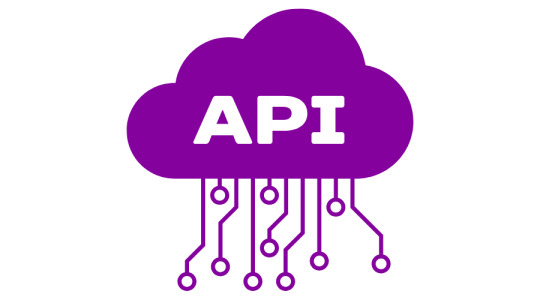
0 notes
Text
Study in Canada: Unlocking Excellence in Education and Career Success
Canada’s reputation as a global education powerhouse continues to grow, attracting students from every corner of the world. Renowned for its academic rigor, inclusive society, and pathways to permanent residency, Canada offers more than just a degree—it provides a transformative experience. Whether you’re drawn to cutting-edge research, vibrant multicultural cities, or stunning natural landscapes, studying in Canada is a decision that promises lifelong rewards. In this guide, we’ll explore what makes Canada a top choice for international students and how StudyLeadConsultants.com, a 5-star rated consultancy, can streamline your journey from application to graduation.
The Canadian Advantage: Why Students Choose Canada
1. Globally Recognized Education System Canada’s universities and colleges are synonymous with quality. Institutions like the University of Toronto, McGill University, and the University of British Columbia consistently rank among the world’s best. What sets Canada apart is its focus on practical learning. Many programs integrate co-op placements, internships, and research projects, allowing students to gain hands-on experience while studying. For instance, the University of Waterloo’s co-op model connects students with industry giants like Google and Microsoft, bridging academia and real-world innovation.
2. Diversity as a Core Value Over 250 ethnic groups call Canada home, creating a mosaic of cultures, languages, and traditions. Campuses reflect this diversity, fostering an environment where students exchange ideas and perspectives. This inclusivity is backed by policies that protect international students’ rights, ensuring equal access to opportunities and resources.
3. Safety and Quality of Life Canada is ranked among the safest countries globally, with low crime rates and a welcoming attitude toward newcomers. Cities like Ottawa, Calgary, and Quebec City offer affordable living, efficient public transport, and access to healthcare—key factors for students prioritizing well-being.
Tailored Programs for Every Ambition
Canada’s education system caters to diverse career goals:
Undergraduate Degrees: Fields like computer science, engineering, and business administration are highly sought after.
Postgraduate Programs: Specialized master’s degrees in data science, renewable energy, and public health align with global industry demands.
Diplomas and Certificates: Institutions like Seneca College and Humber College offer career-focused diplomas in hospitality, animation, and cybersecurity, often with shorter durations and lower costs.
Emerging disciplines such as artificial intelligence (AI) and green technology are particularly prominent, with Canada investing heavily in research and innovation hubs.
Navigating Admissions: A Step-by-Step Guide
The application process for Canadian institutions can be complex, but breaking it into stages simplifies the journey:
Research and Shortlist: Identify programs that match your goals. Consider factors like faculty expertise, campus facilities, and alumni success stories.
Prepare Documentation:
Academic transcripts and degree certificates (translated into English/French if required).
Language proficiency tests (IELTS, TOEFL, or PTE for English; TEF for French).
Statement of Purpose (SOP) and letters of recommendation.
Apply Through the Right Channel: Utilize the Student Direct Stream (SDS) for faster visa processing if you’re from eligible countries like India, Vietnam, or the Philippines.
Financial Planning: Calculate tuition fees, living expenses, and explore scholarships. For example, the University of Alberta offers International Student Scholarships worth up to CAD 10,000.
StudyLeadConsultants.com offers personalized support at every stage, from selecting the right program to drafting a compelling SOP and preparing for visa interviews.
Affordability and Financial Support
While Canada offers high-quality education, it remains more affordable than the U.S. or U.K.:
Tuition Fees: Range from CAD 15,000 to CAD 35,000 annually for undergraduate degrees. Diploma programs often cost under CAD 20,000 per year.
Living Costs: Budget between CAD 10,000 and CAD 15,000 yearly, depending on accommodation choices (on-campus housing vs. shared apartments).
International students can work up to 20 hours per week during semesters and full-time during breaks. Co-op programs also provide paid internships, helping students offset expenses while building professional networks.
Post-Study Opportunities: From Classroom to Career
Canada’s Post-Graduation Work Permit (PGWP) is a game-changer. Graduates can work for up to three years, gaining experience in sectors like tech, healthcare, and finance. Many provinces, such as Ontario and British Columbia, prioritize PGWP holders for permanent residency through programs like the Provincial Nominee Program (PNP).
Employers value Canadian credentials, with 90% of graduates securing employment within six months of completing their studies (source: Universities Canada).
Beyond Academics: Embracing the Canadian Lifestyle
Studying in Canada isn’t just about earning a degree—it’s about holistic growth:
Explore Natural Beauty: Hike in the Rocky Mountains, kayak in Nova Scotia, or witness the Northern Lights in Yukon.
Cultural Immersion: Participate in festivals like Toronto International Film Festival (TIFF) or Montreal’s Jazz Festival.
Language Skills: Strengthen bilingual abilities in English and French, enhancing your global employability.
How StudyLeadConsultants.com Elevates Your Experience
With a 5-star rating, StudyLeadConsultants.com stands out for its student-centric approach:
Customized University Matching: Their experts analyze your academic background and career goals to recommend ideal programs.
Visa Success Assurance: From document checklist preparation to mock interviews, they ensure compliance with Immigration, Refugees and Citizenship Canada (IRCC) guidelines.
Post-Arrival Support: Assistance with housing, bank account setup, and cultural integration helps you settle smoothly.
Conclusion: Your Future Begins in Canada
Choosing Canada for higher education is an investment in a future filled with possibilities. The country’s blend of academic excellence, cultural richness, and career opportunities creates an environment where students thrive. Whether you aspire to innovate in tech, lead in business, or contribute to sustainable development, Canada equips you with the skills and experiences to excel.
Take the first step toward your Canadian dream with StudyLeadConsultants.com. Visit their website today to schedule a free consultation and embark on a journey that transforms aspirations into achievements.
website:https://studyleadconsultants.com/about/
0 notes
Text
0 notes
Text
Quantum Ai: Revolutionizing Crypto Trading in Canada
Quantum Ai leverages cutting-edge artificial intelligence and machine learning to deliver a seamless, automated trading experience tailored for both novice and experienced investors Quantum Ai Website across Canada. By continuously scanning live market data, Quantum Ai spots high-probability opportunities and executes orders in milliseconds, helping you stay ahead in a fast-moving environment.
Key Benefits 24/7 Market Monitoring: Automated bots track global crypto exchanges around the clock, so you never miss a trend or opportunity. Intuitive Interface: A clean, responsive dashboard makes it easy to review performance metrics, adjust strategies, and manage risk—no coding required. Custom Strategy Builder: Choose from pre-configured AI models or create bespoke trading rules, setting stop-loss and take-profit levels that match your risk profile. Demo Mode: Practice trading with virtual funds to build confidence before deploying real capital. Security & Compliance: Enterprise-grade SSL encryption protects your account, while optional two-factor authentication ensures only you have access. Supported Assets
Quantum Ai offers broad coverage of leading cryptocurrencies:
Bitcoin (BTC) Ethereum (ETH) Litecoin (LTC) Ripple (XRP) Plus dozens of emerging altcoins Why Canadian Traders Love Quantum Ai Fast Withdrawals: Seamless integration with major Canadian payment methods – e-transfers, credit cards, and crypto wallets. Local Support: Dedicated customer service team based in Toronto, available via live chat and email. Educational Resources: Comprehensive tutorials, webinars, and market insights keep you informed about new features and trading best practices. Scalable Plans: Flexible subscription tiers allow you to start small and scale up as your trading needs grow. Getting Started Sign up with your email and complete quick identity verification. Select your preferred AI trading strategy or customize your own. Fund your account (minimum CAD 300) and activate live trading.
Discover why Quantum Ai is becoming the go-to automated trading solution for Canadians. Visit our website to learn more and start your free demo today!
1 note
·
View note